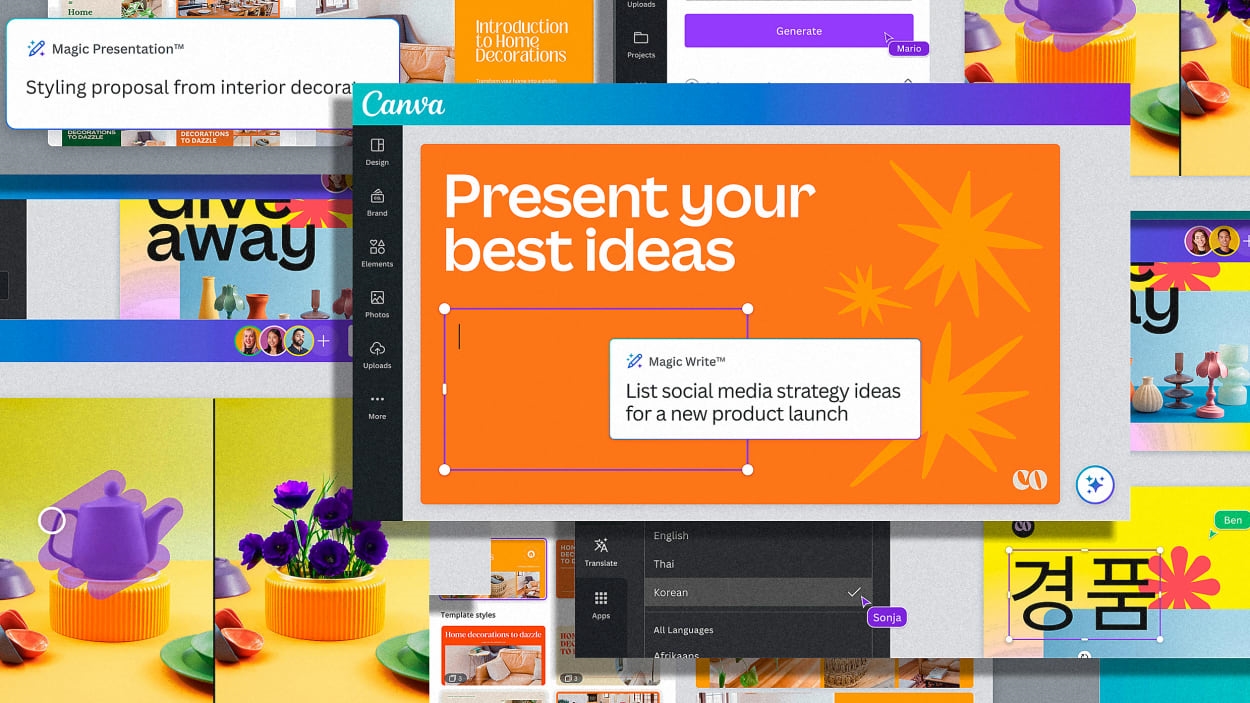Canva’s new generative AI tools are now the ones to beat
Party invitations. Social media posts. Sales decks. T-shirts. Canva has won over 125 million people with an intuitive user interface that makes it easy to design just about anything within a single app—thanks largely to CEO Melanie Perkins’s decade-long obsession to make her platform operate as efficiently as possible.
Today, after adding 40 million new users over the last year six months alone, the company is announcing a significant makeover of the platform. While it looks and feels much like the Canva you already know, the company has integrated some of the latest AI text- and image-generation technology into the UI across Canva. These aren’t simply tech demos; Canva is treating AI as a true extension of its interface.
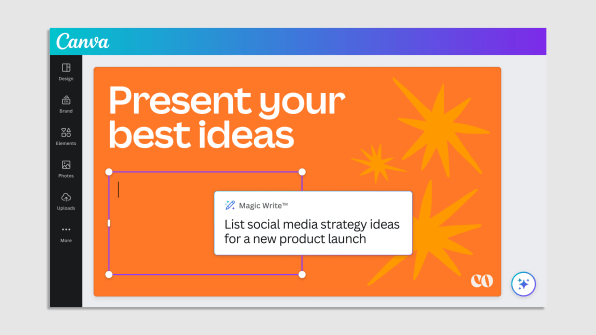
“We’re infusing magic across the entirety of our products,” explains Perkins as she gives me a rapid-fire demo over Zoom. In this case, “magic” is not just a superlative, but the word Canva uses to describe all of its powerful AI experiences.
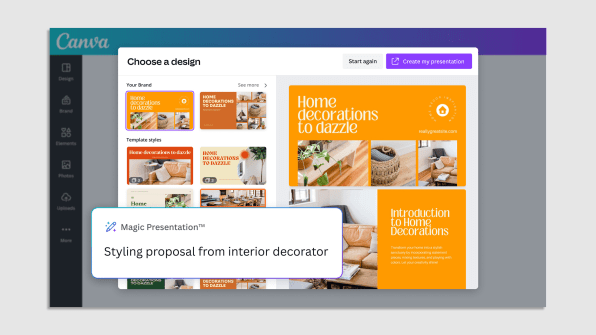
For instance, Magic Write launched late last year inside Canva Docs as a way to generate words from a prompt. Now, four months later, Magic Write is available inside any Canva project you might be working on. All you do is tap where you’d like the copy to go, and type a few words to explain what you had in mind. The same is true for a feature called Magic Edit, which creates images from prompts instead of text; Magic Eraser, which makes unwanted objects disappear; Magic Design, which instantly processes an uploaded image into a variety of possible contexts (like posters or brochures); and Magic Presentation, which transforms a prompt into a slide deck.
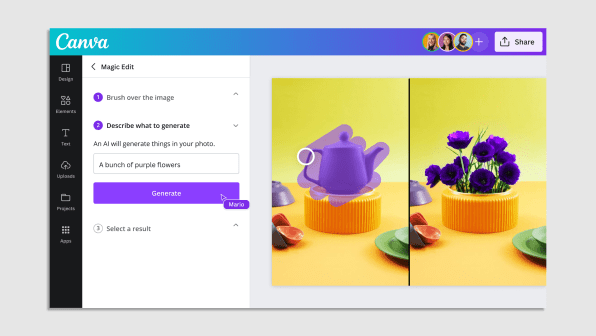
What’s impressive is how Canva’s AI features come together in a real workflow. Perkins asks me to throw out a topic—a new business we might be launching. I suggest a bike shop. Using Magic Presentation, she types in something along the lines of “bike shop slide deck,” and instantly, a dozen or so fully formed presentations appear before my eyes. They’re a bit generic, of course, but they’re filled with bike shop imagery, bike shop copywriting, and have all those stock pages for revenue and meeting the team that you’d expect. The title? “Get Your Wheels Turning: Opening a Bike Shop.” Classic.
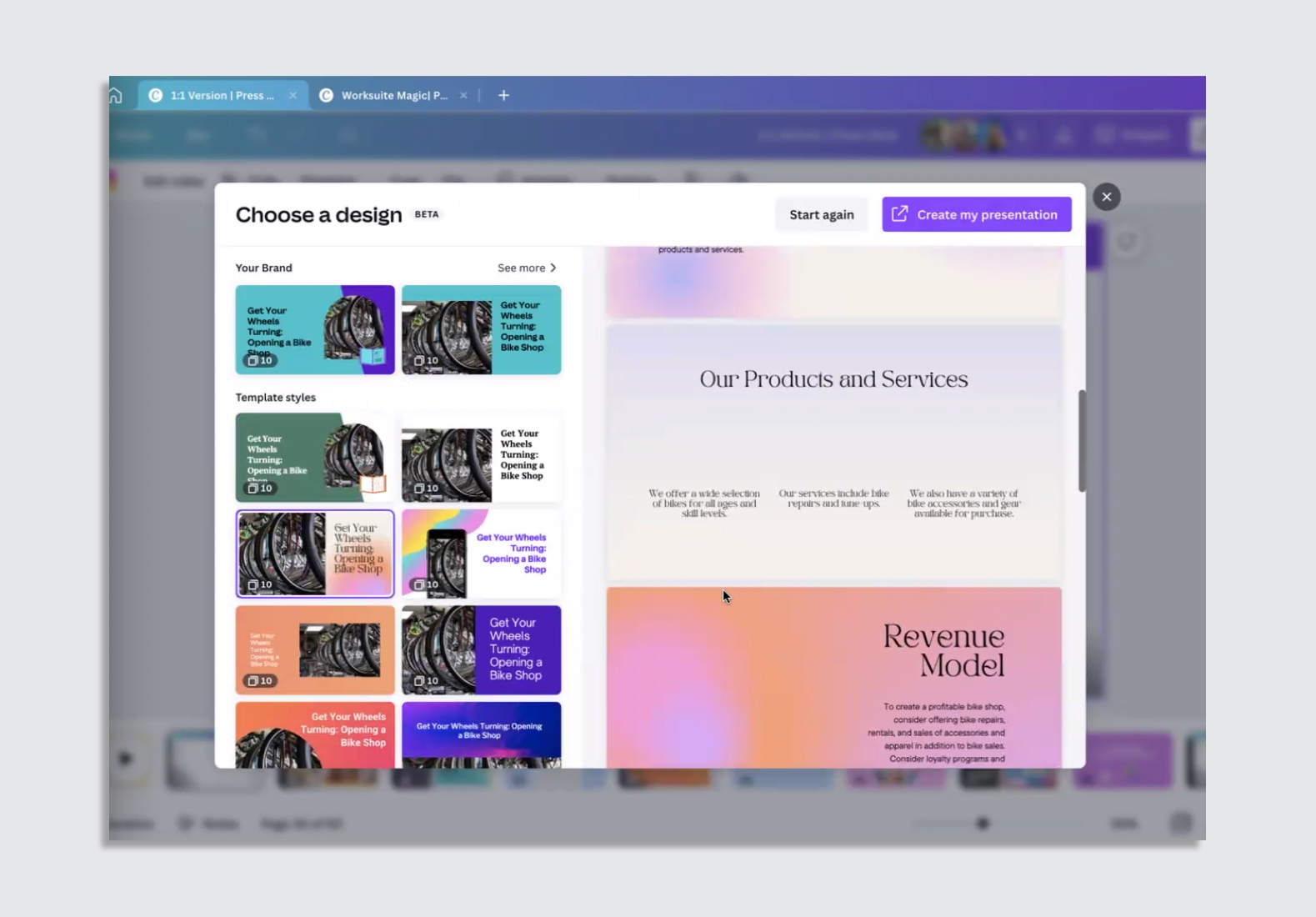
The secret to making these automated creation tools work is that Canva’s base templates were actually created by humans. AI simply customizes the copy and pulls images that Canva has already licensed. It’s part human, part machine. Perkins calls this combination a “dance,” ensuring that all the media used is as high quality as possible, while artists continue to receive royalties for the use of real images inside this AI-assisted tool. Yet none of that matters to an end user who, instead of having to dig through Canva’s prebuilt templates (which is a chore), can make a slideshow appear out of thin air.
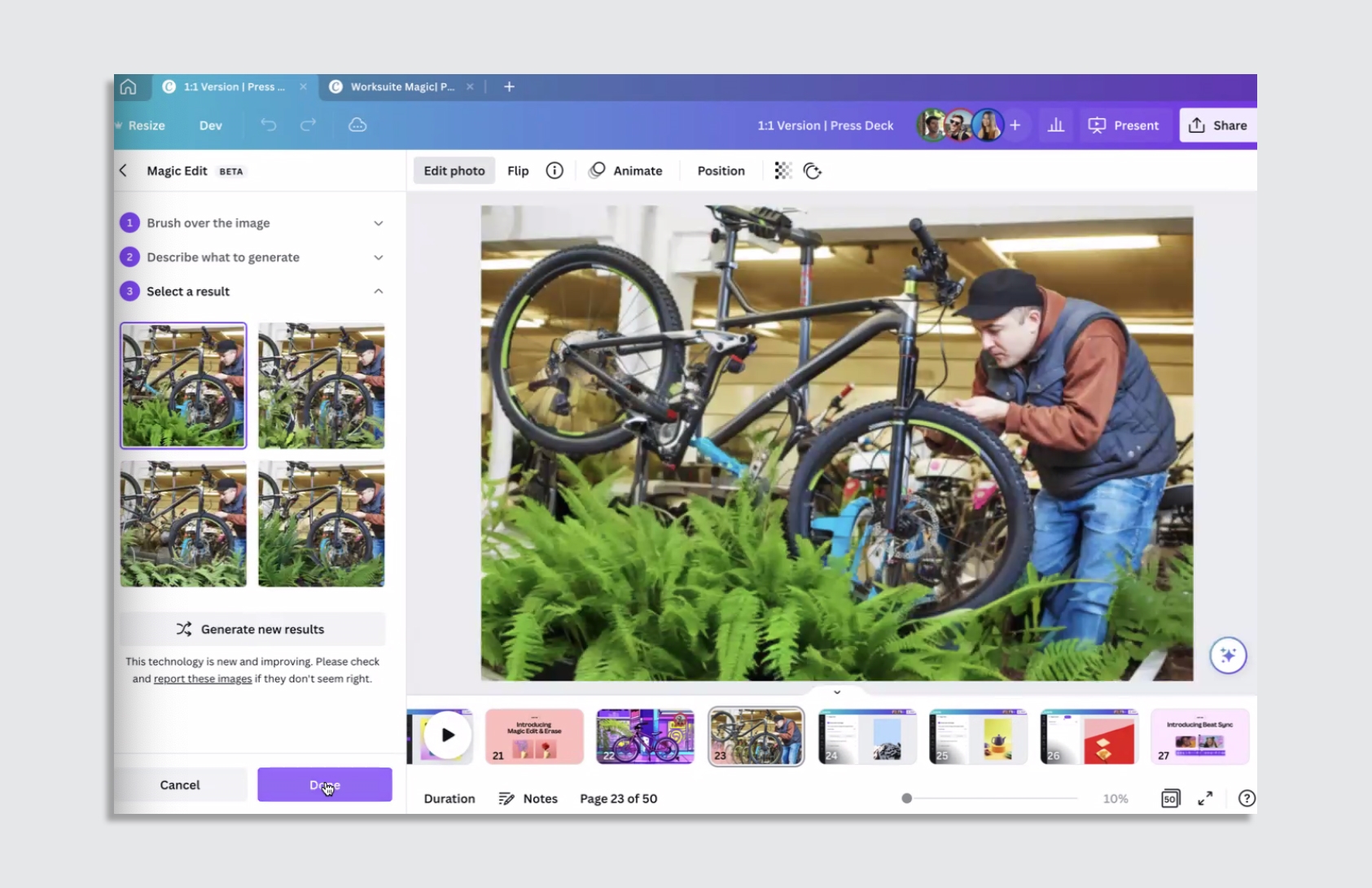
Tapping into the presentation, everything is tweakable with AI. Perkins asks what we might want to add to a scene of bikes inside a store, and I suggest ferns. (Don’t ask why. I don’t know. Ferns came to mind.) After tracing over parts of an AI-generated bike shop image to make room for some plant life, she then types “ferns,” and Canva generates several AI images of ferns. When she selects the varietal of fern she likes, it automatically populates the image, filling her complex trace perfectly. I’m surprised how well it integrates into the complex bike scene, given that the bike still looks a little wonky if you inspect it closely.
Canva declines to share exactly where its AI generation is coming from. Much of it has been built in-house through long-term investment and acquisition, Perkins says, while some of it is served up through partners (like how Microsoft is using OpenAI to power Bing). However, Perkins promises that all rights to use have been ironed out, so that “anything you create in Canva is yours.” So, if you build your next AI spokesperson, logo, bike, or fern in Canva, you’ll own it.
Canva’s updates come during a big week for generative AI, which saw the release of ChatGPT-4 and Midjourney v5. After a long, quiet period, Adobe also revealed its own answer to OpenAI this week: a collection of AI generators built in-house, and on fully licensed material, that sidesteps both the ethical and legal gray areas of training AI. The company is taking precautions to get its tech just right before blindly charging forward as we’ve seen Microsoft and others do; but as of now, those new AI tools are only available as stand-alone experiments that are yet to be integrated into Adobe’s software suite.
Canva’s own AI generators may not represent the top of the line in the industry, but its AI integration is so seamless and logical that it all feels startlingly mature. Since the option was previewed in the system last year, people have generated images 60 millions times on Canva, and that’s a figure sure to grow.
However uneasy AI generation may make designers and artists, Canva has proven its practical viability today. The ongoing challenge will be not just whether Canva can continue to improve its AI tools, but how well it continues to balance and prioritize the licensed work of humans along the way.
(39)


